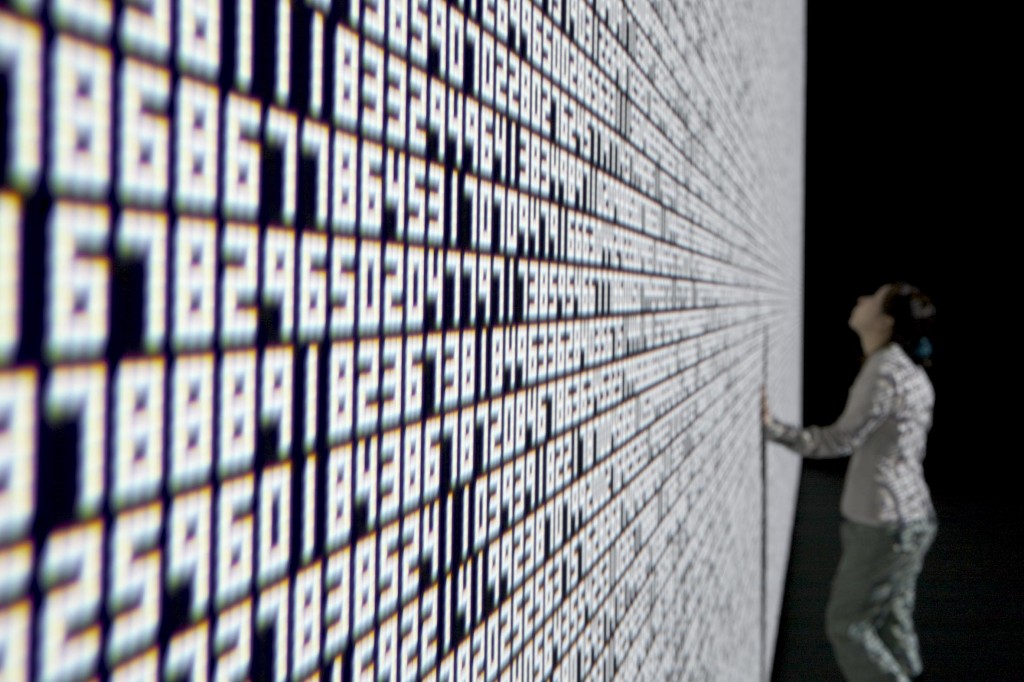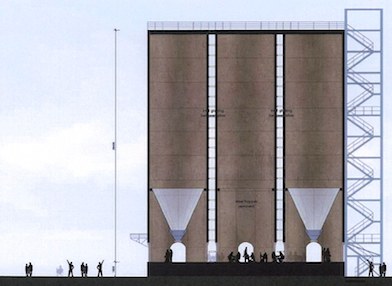INHALE is a cultural platform where artists are presented, where great projects are given credit and readers find inspiration. Think about Inhale as if it were a map: we can help you discover which are the must-see events all over the world, what is happening now in the artistic and cultural world as well as guide you through the latest designers’ products. Inhale interconnects domains that you are interested in, so that you will know all the events, places, galleries, studios that are a must-see. We have a 360 degree overview on art and culture and a passion to share.

Do you know that music that gets directly to your brain, as if the artist knows exactly how to push the buttons so that the sound enters into your head? Then you definitely know Ryoji Ikeda, the Japanese artist. His works are visual and sound installations, thus working on different levels, which has a greater impact on the public.
His performances cross the limits of art and science, and it’s difficult (and useless) to try to put him in a box with a label. What is sure is that his performances and installations are immersive.
Rhythm is very important for Ikeda, and his pieces are highly linked to his way of creating a space with sounds. Many of his works start in a minimal direction which gives the viewer a sense of calm while watching them, but after that the rhythm is broke and the pattern changes. And what is more alarming than this sense of peace that is destroyed in order to put up a new zone?
For the Auckland Triennial he prepared two works that are on display in the city until the 11th of August 2013.
Ryoji Ikeda creates a sensorial experience, mixing mathematics with images. It’s inevitable to think about mathematics when seeing his installations. Superposition, one of his famous projects, mixes science and art. He uses the principle of superposition. This principle works “for all linear systems, the net response at a given place and time caused by two or more stimuli is the sum of the responses which would have been caused by each stimulus individually.”
As he states, “superposition is a project about the way we understand the reality of nature on an atomic scale and is inspired by the mathematical notions of quantum mechanics. Performers will appear in his piece for the first time, performing as operator/conductor/observer/examiners. All the components on stage will be in a state of superposition; sound, visuals, physical phenomena, mathematical concepts, human behaviour and randomness – these will be constantly orchestrated and de-orchestrated simultaneously in a single performance piece.”
His works are exhibited in museums like Barbican, STRP Biennial in Eindhoven, the Perimeter Institute for Theoreical Physics, Waterloo, CA, ZKM | Media Museum, but he is also present in festivals like Sound of Stockholm or Sonar.
http://youtu.be/QHUWvvYDb4c
On his his album +/- Ikeda says “a high frequency sound is used that the listener becomes aware of only upon its disappearance” In fact, he uses sounds that are, sometimes, hardly bearable for the human ear. Is it the space itself? Is it the DNA code? Is it quantum physics? What are the visuals accompanying the music?
If you look closer at this clip below, you can see at one moment a simple phrase that can characterize very well his music: “The most beautiful ugly sound in the world”.



























































